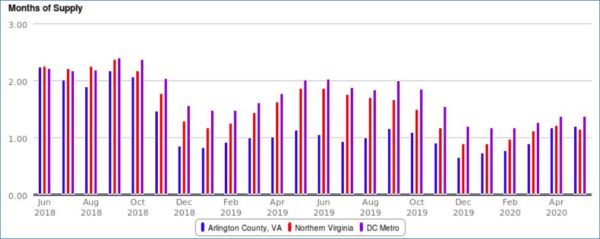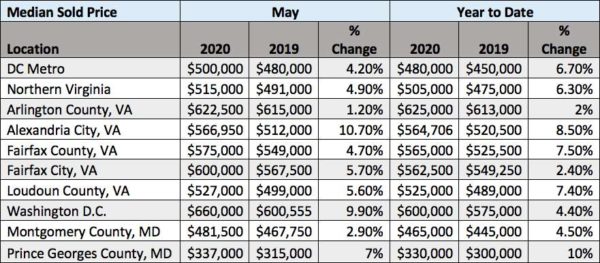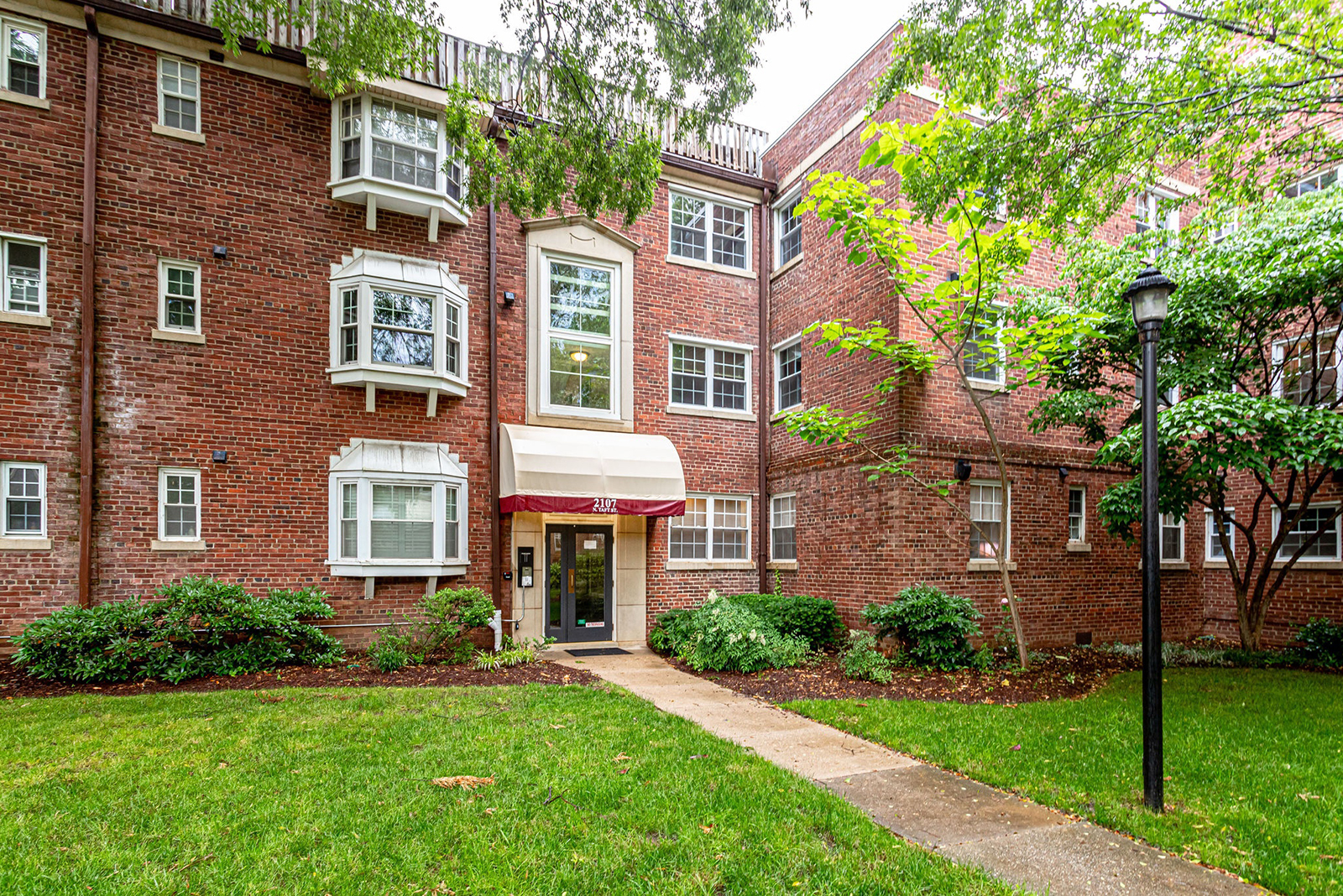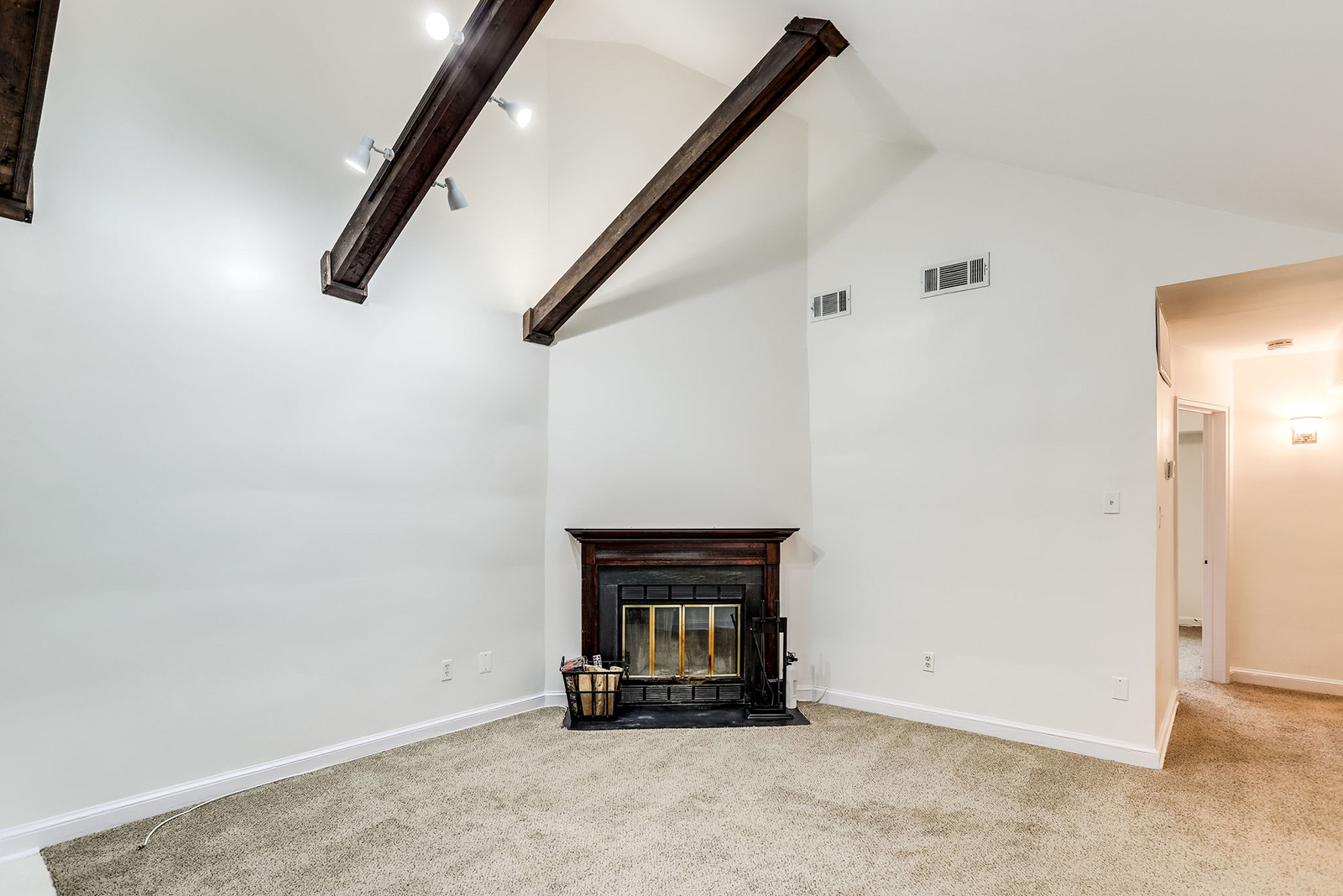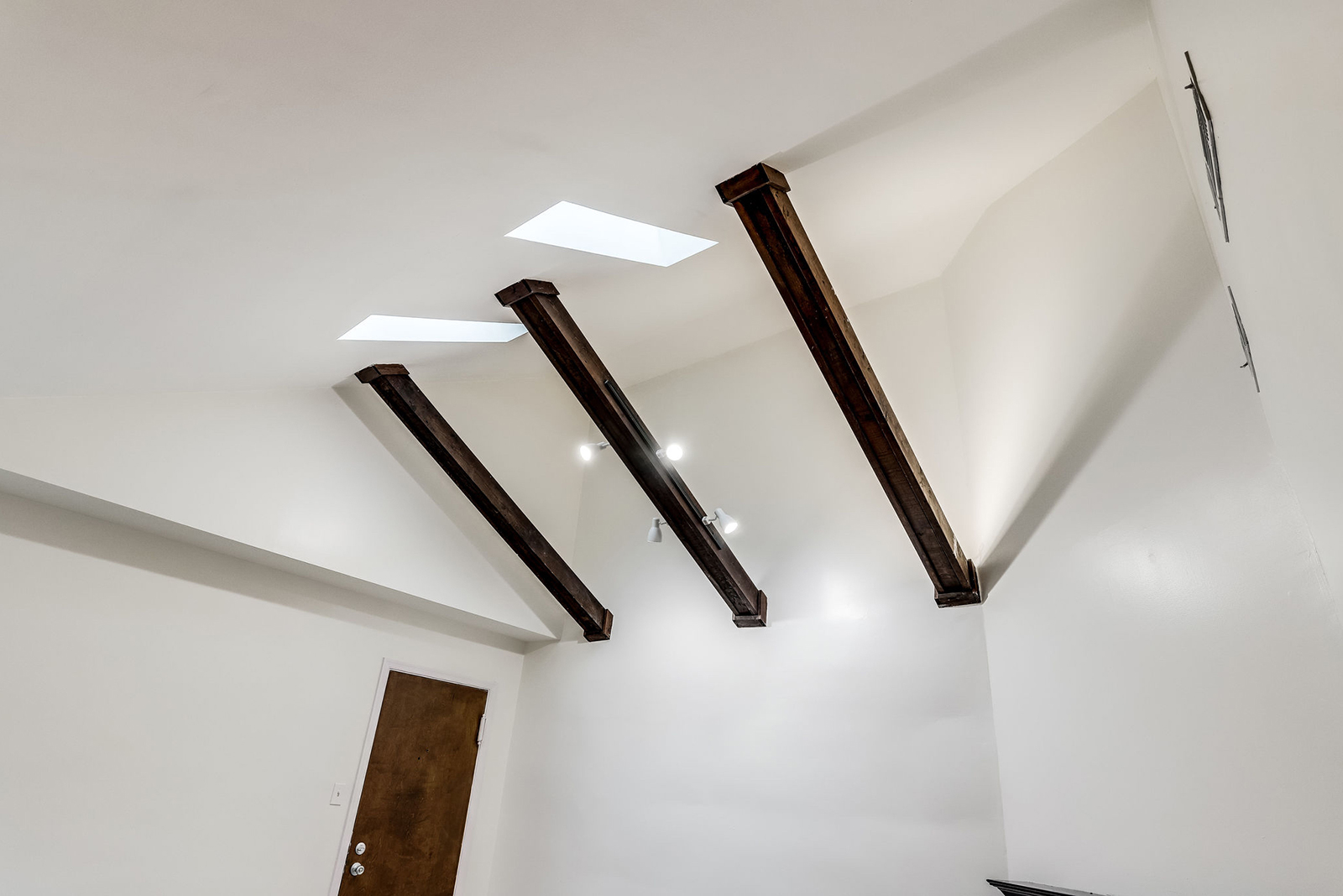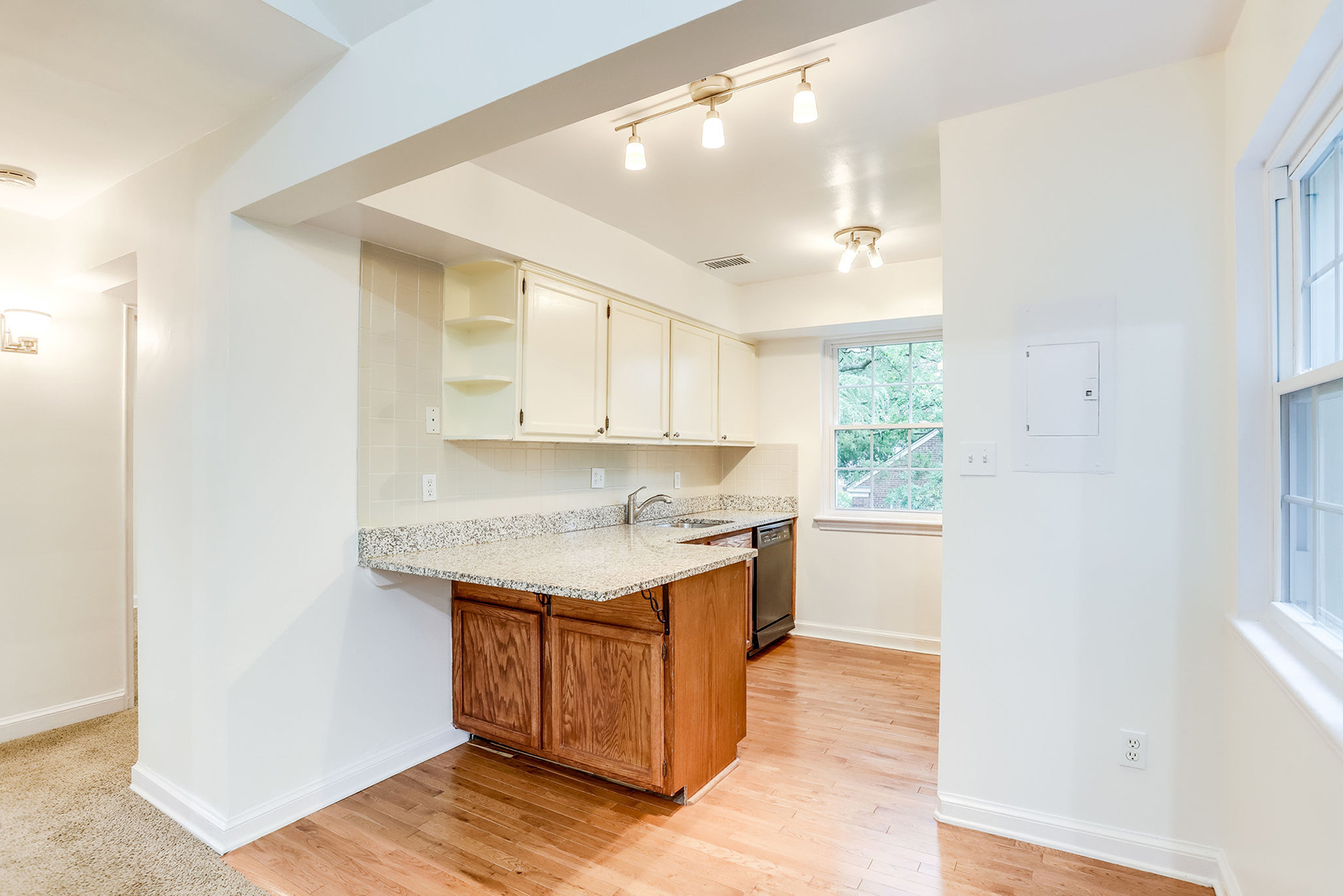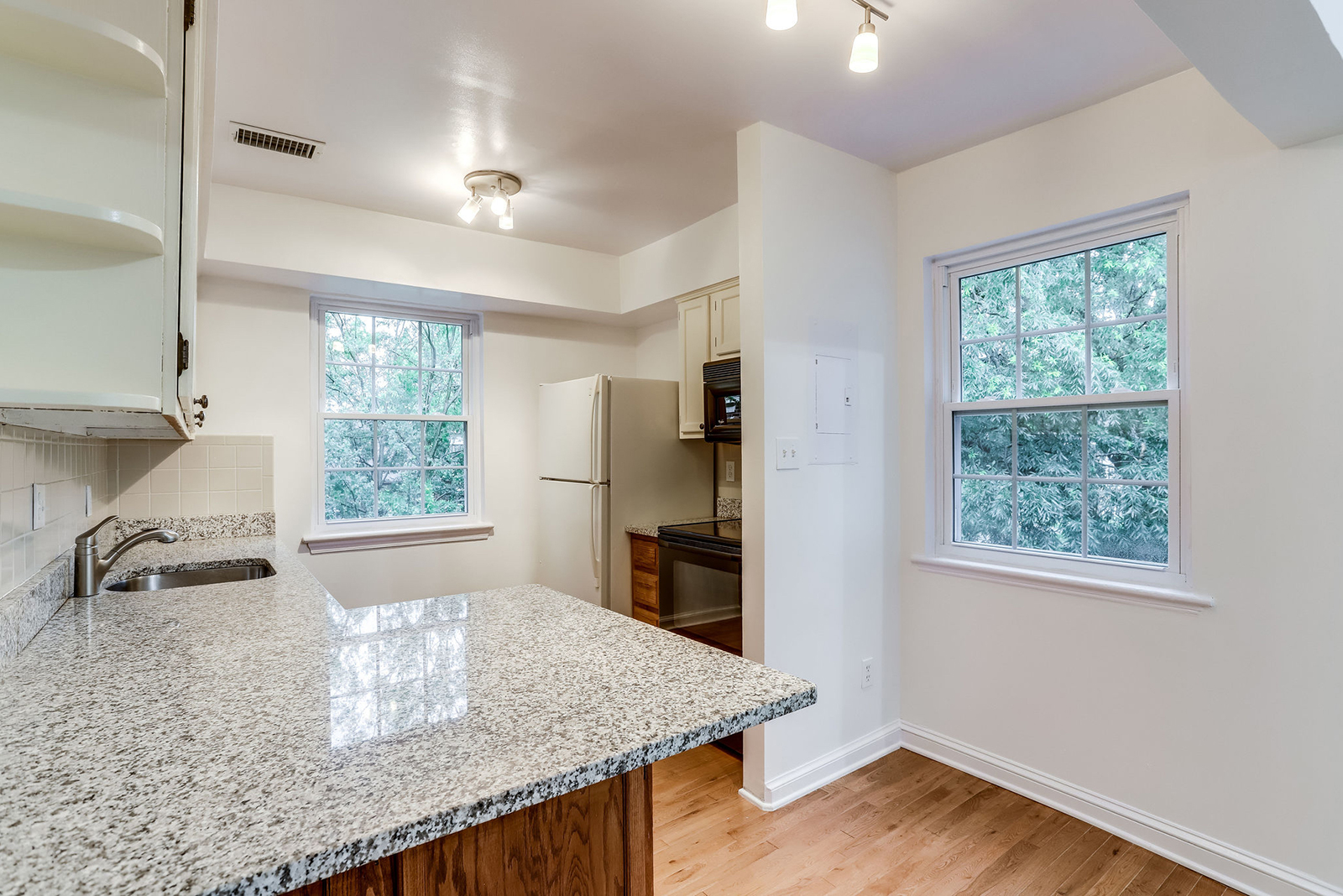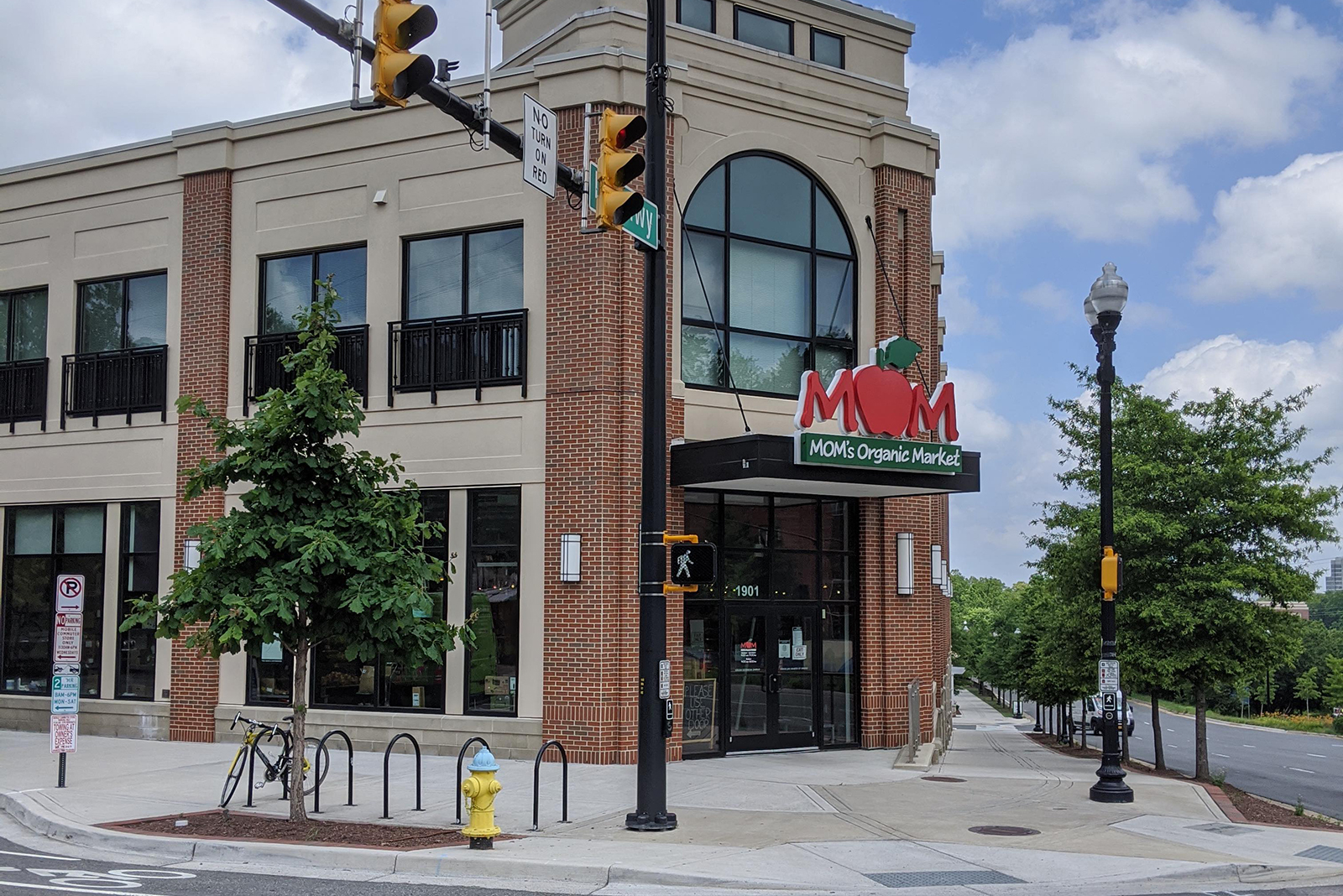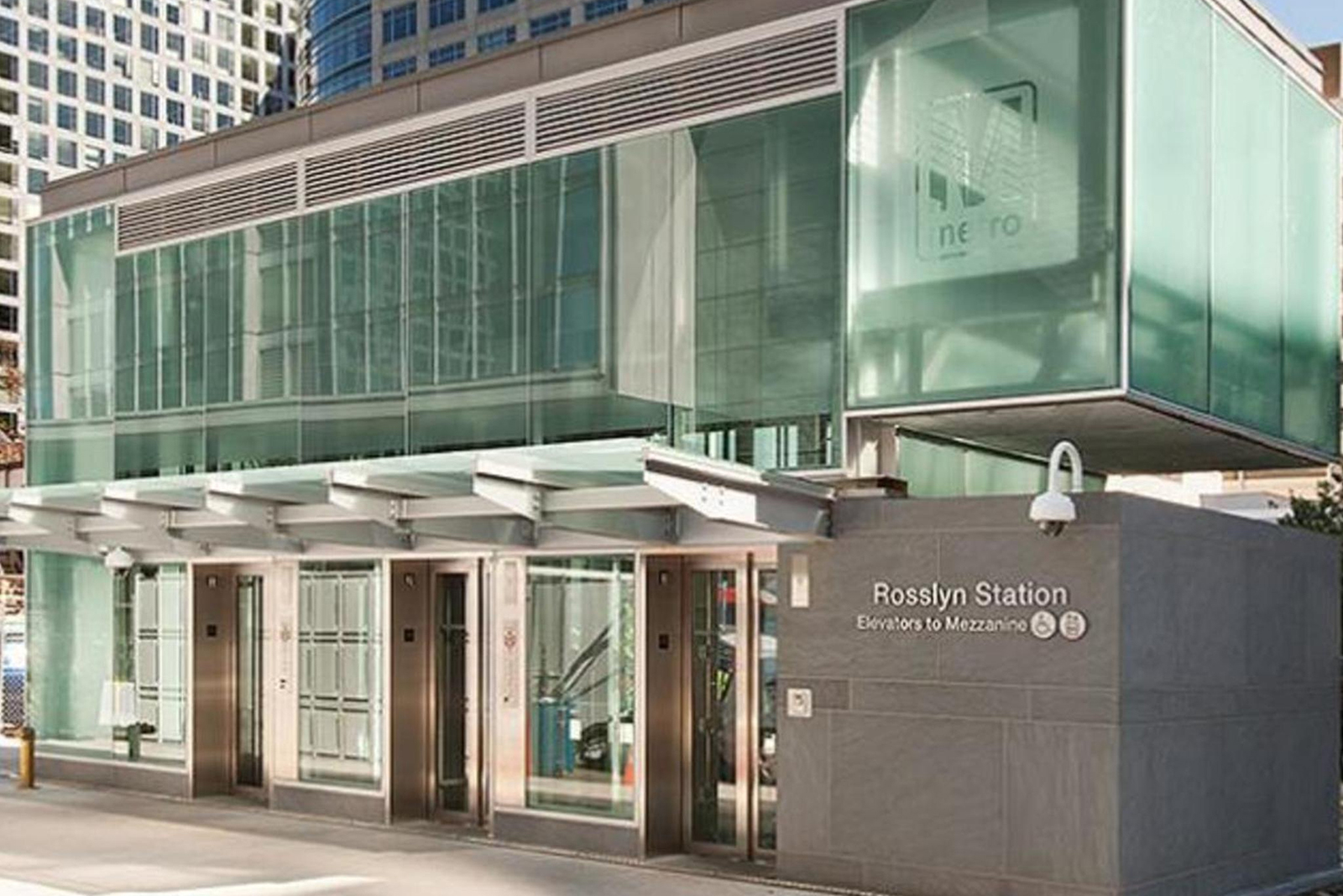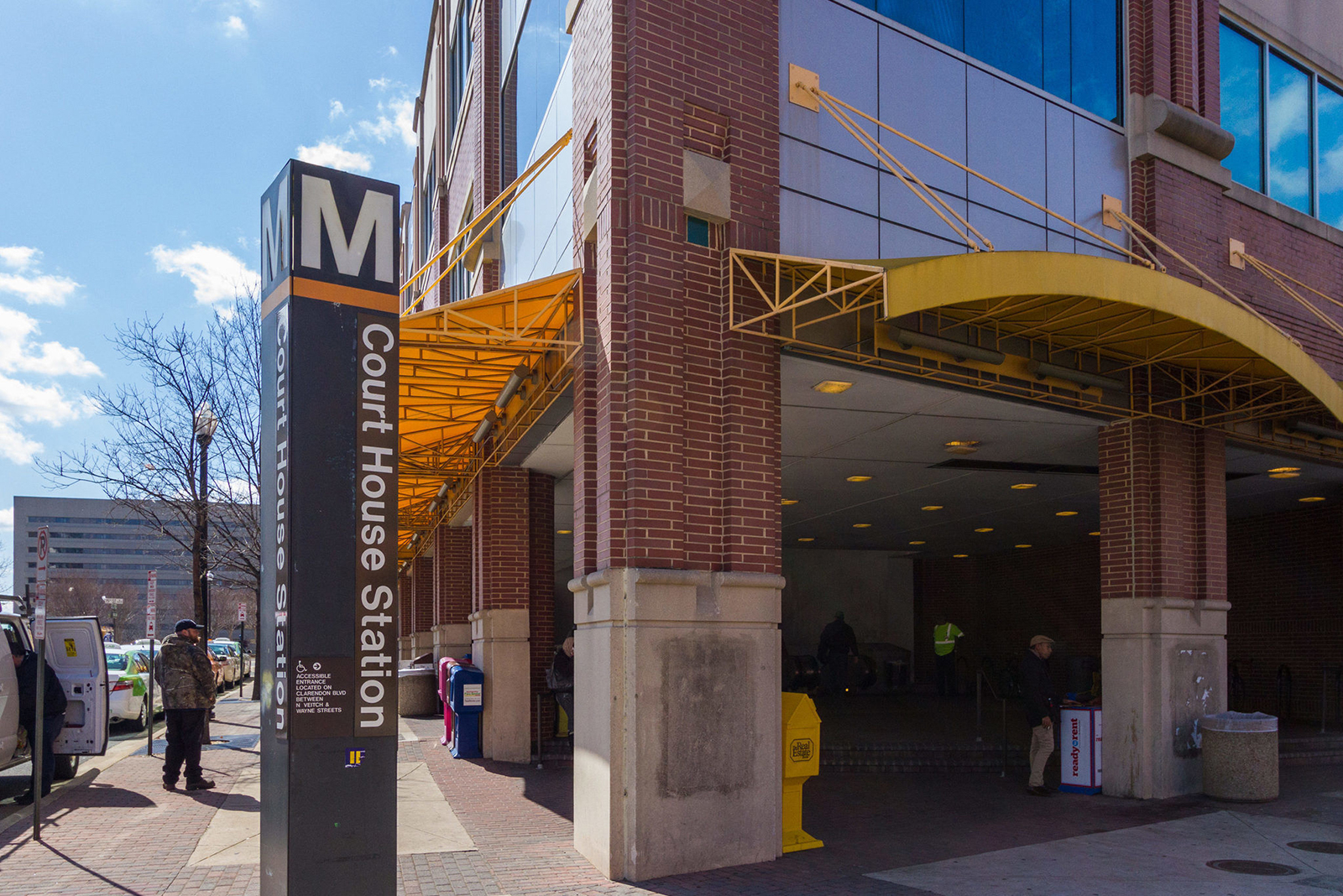This regularly-scheduled sponsored Q&A column is written by Eli Tucker, Arlington-based Realtor and Arlington resident. Please submit your questions to him via email for response in future columns. Enjoy!
Question: What impact is Coronavirus having on the regional and local real estate market?
Answer: COVID-19 has had a similar impact on new listings in Arlington as it has across Northern Virginia and the D.C. metro area with each market dealing with a ~30-35% year-over-year drop in April and May. However, demand in Arlington has tapered off from 2019 highs, while demand in Northern Virginia and the D.C. metro area is steadily increasing, despite everything we’ve gone through with Coronavirus.
The tapering of Arlington demand, which is still very strong relative to historical numbers, is bringing the Arlington market more in-line with supply/demand readings of the Northern Virginia and D.C. metro markets.
The below chart shows Months of Supply (a good supply/demand ratio) for each market. Months of Supply calculates how long it would take for the existing housing inventory to sell out, if no additional inventory was supplied.
Prices Up Regionally
Year-over-year prices for May sales and year-to-date sales are up significantly across the region. Across all of the counties/regions listed below, Arlington’s year-over-year growth is the lowest, which is almost certainly due to the significant appreciation in Arlington last year, after the Amazon announcement.
Keep in mind that sales data lags actual market activity because it usually takes 30-45 days for a property to close, so May sales are more reflective of March and April activity than what we’re currently seeing. This is particularly interesting because March and April were the peak of Coronavirus concerns/lockdowns. Barring any major shifts in the D.C. area economy, I expect year-over-year prices to show even more growth as we get further into the year and sales reflect an even stronger buyer market.
Arlington New Listings Down
We’re used to seeing new listing supply peak from March-June, after November-February lows, with April and May almost always exceeding March’s supply. Unfortunately for many home buyers, new inventory tumbled in April and continued dropping further in May.
The May 2020 drop in new inventory represents a 32.1% decline compared to May 2019, which is particularly concerning when you consider that new inventory in May 2019 was already down 21.3% from May 2018, giving us a 47% decline in new inventory from May 2018 to May 2020.
The decline in new inventory was distributed pretty evenly across property type (single-family vs condo) and price point.



